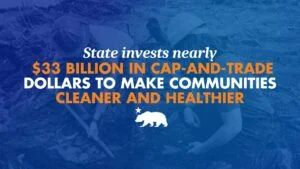
Is California’s Green Ambition Fueling a Costly Future for Drivers?
In a bold move to combat climate change, California is pushing forward with plans to extend its cap-and-trade program, raising questions about its impact on everyday Californians. As the state balances environmental goals with economic realities, this initiative could reshape how residents fuel their lives and budgets. With billions invested in cleaner communities, the program promises long-term benefits, but at what short-term cost?
California's cap-and-trade system, overseen by the California Air Resources Board (CARB), has channeled nearly $33 billion into projects aimed at reducing greenhouse gas emissions and boosting public health. Since its inception over a decade ago, the program has funded over half a million projects, from wildfire resilience in tribal lands to workforce training for zero-emission vehicles in Fresno. CARB Chair Liane Randolph highlights the program's success, stating, "California is proud of how we’ve invested billions of cap-and-trade dollars... It’s climate policy that pays." These efforts have already cut emissions equivalent to removing more than 80% of the state’s gas cars from the roads annually, while also returning $15 billion in bill credits to utility customers.

However, extending the program beyond 2030 could come with a steep price tag for drivers. A report from the nonpartisan Legislative Analyst’s Office warns that reauthorization might add up to 50 cents per gallon to gasoline costs, potentially amounting to an extra $700 annually for typical motorists. This burden would hit lower-income households hardest, as they allocate a larger share of their budgets to fuel. Governor Gavin Newsom, alongside legislative leaders, is championing the extension to secure funding for emissions reductions and meet the state's 2045 net-zero carbon goal. Yet, as Meredith Fowlie, an expert on carbon pricing, notes in her analysis, higher carbon prices could mirror challenges seen in France and Canada, where fuel tax hikes sparked widespread protests due to affordability issues.
Comparisons with international examples underscore the risks. In France, a carbon tax increase led to the 'yellow vest' movement, while in Canada, public backlash prompted a rollback. In California, where gas prices already exceed the national average, this could exacerbate frustrations, especially with factors like refinery closures adding pressure. Fowlie suggests using cap-and-trade revenues to offset impacts, such as reducing excise taxes, but warns this might weaken the program's incentive for greener choices. Despite these trade-offs, the program's success in decoupling economic growth from emissions—down 20% since 2000 while GDP rose 78%—demonstrates its potential as a model for climate leadership.
Ultimately, California's cap-and-trade extension represents a critical step toward sustainability, but it forces a tough conversation on equity and cost. Will the environmental wins outweigh the financial strain on households? As the state moves forward, this policy could inspire nationwide change or serve as a cautionary tale. What are your thoughts on balancing green goals with everyday expenses? Share your views in the comments below and help spread this discussion.